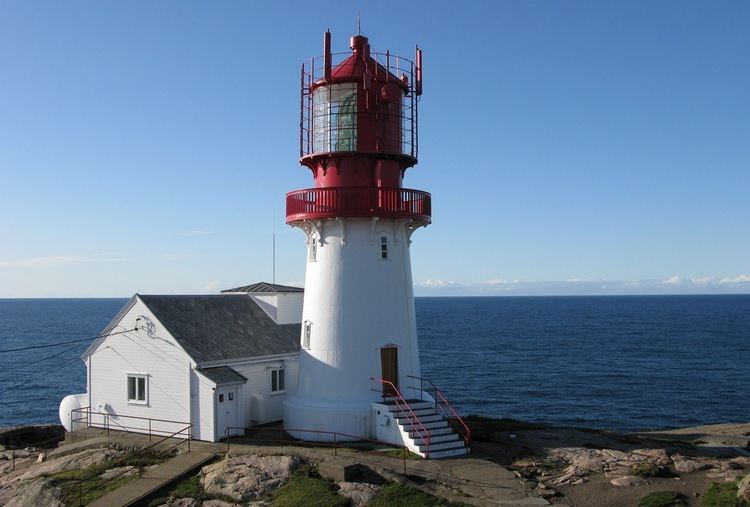Country Area 7,276 km2 | Language spoken NOK Region Sørlandet Population 177.906 | |
 | ||
Colleges and Universities University of Agder, Ansgar School of Theology and Mission Points of interest Kristiansand Zoo and Amusement Park, Lindesnes Lighthouse, Christiansholm Fortress, Sjøsanden, Agder Natural History Museum and Botanical Garden Destinations | ||
Mayor Thore Westermoen Kristelig Folkeparti (2003–present) | ||
Map of Vest-Agder
Vest-Agder [²vestˌɑɡdər] (West Agder) is a county in Norway, bordering Rogaland to the west and Aust-Agder to the east. In 2016, there were 182,701 inhabitants, which is about 3.5% of the total population in Norway. Its area is about 7,277 square kilometres (2,810 sq mi). The county administration is located in its largest city, Kristiansand.
Contents

Shipping, commerce, and recreation are the main industries here. Compared to other counties of Norway, Vest-Agder is noted for having the highest level of foreign exports. Another international dimension linked to the county is the large-scale emigration to North America that took place from the 1850s and onwards, which resulted in many Americans returning to the county after Norway became prosperous. This feature is particularly predominant in Kvinesdal and Farsund, which maintains strong cultural links with the United States.

Name

The meaning of the name is "(the) western (part of) Agder". See also: Aust-Agder
Lister og Mandal amt was created on 1 January 1662 and it consisted of the two old lens of Lister and Mandal. This name continued until 1 January 1919, when the name was changed to Vest-Agder.
Coat-of-arms
The coat-of-arms is from modern times. They were granted on 12 December 1958. They show an oak tree in yellow on a green background, representing the rich nature in the area.
Geography
Vest-Agder is the southernmost county in Norway, extending inland from the North Sea and its arm, the Skagerrak, to the southern fringes of Setesdalen, surrounded by the mountain range Setesdalsheiene. It includes the southernmost point of the entire country, Pysen island south of Mandal, and the southernmost part of continental Norway, Lindesnes. It has a very broken and hilly surface. From the coast there are six valleys that stretch north into the county: Audnedalen, Lyngdalen, Kvinesdalen, Mandalen, Sirdalen, and Otradalen (which continues into Aust-Agder where it is called Setesdalen).
Most of the habitation lies along the coast, including the towns Kristiansand, Mandal, Flekkefjord, and Farsund. About 31 fjords are located there. The northern portion is mountainous and sparsely settled, while the central upland moors are used for pasturing of cattle and sheep. Since the Gulf Stream touches the coast of Vest-Agder, it is also called "the Norwegian Riviera", and Agder as a whole is also called "The California of Norway".
History
In the 16th century, Dutch merchant vessels began to visit ports in southern Norway to purchase salmon and other goods. Soon thereafter the export of timber began, as oak from southern Norway was exceptionally well suited for shipbuilding. As the Netherlands developed in the 17th century, it began to suffer from a severe labor shortage, and many families from Vest-Agder and Aust-Agder emigrated to the Netherlands, especially the coastal areas.
In the 19th century, emigration to the United States started. One of the most important causes of this emigration was the emergence of steamships. While Vest-Agder and Aust-Agder had historically had very strong positions in the manufacture and repair of sailing ships, the change to steam resulted in very hard times for this industry. Emigration to the United States was a means of escaping from the high unemployment that followed.
Municipalities
On 1 January 1838, all the counties were divided into local administrative units each with their own governments (see formannskapsdistrikt). The number and borders of these municipalities were based on the parishes of the Church of Norway. Over time the number and locations of these have changed, and at present there are 15 municipalities in Vest-Agder. The municipality of Åseral was part of the neighboring county of Nedenes until 1880, when it was moved to Vest-Agder.
